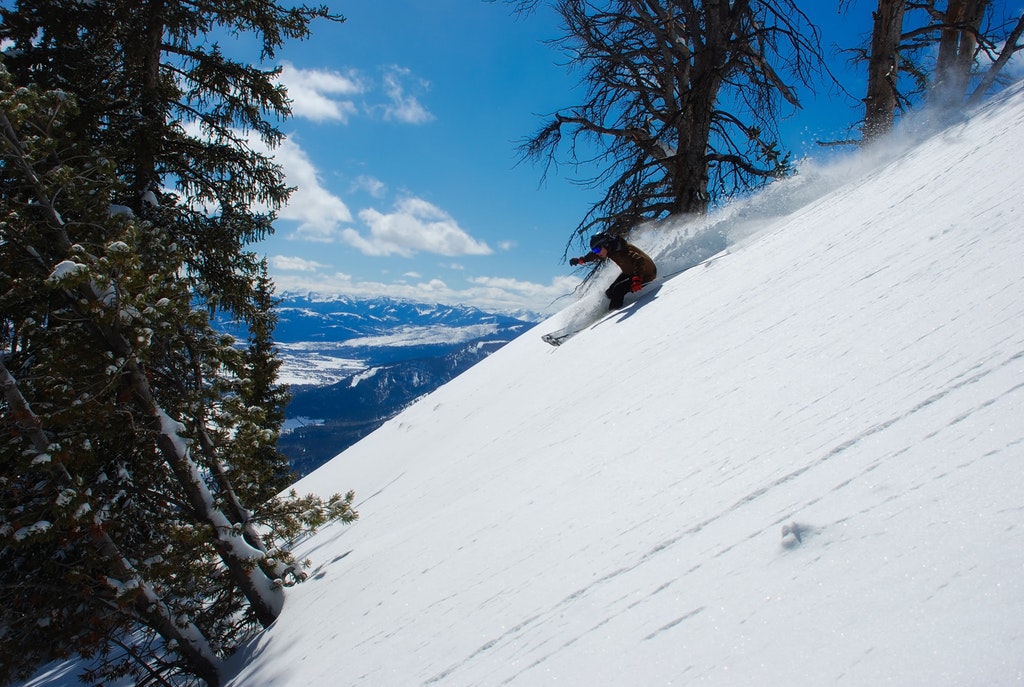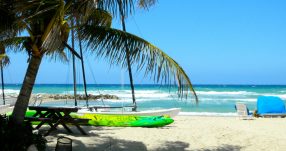One of the most important safety tips for skiing and snowboarding topical in recent news is to be aware of the possibility of avalanches. Three people have died recently in the Swiss Alps in separate incidents involving avalanches. This recent article from the Telegraph outlines some of the precautions you should take should you experience an avalanche, while this video shows a reconstructed real life story of how skier Matt Clevenger survived being buried alive by an avalanche thanks to his friends’ rescue knowledge.
Get in shape
Remember that skiing is a sport, and so, it is physically demanding. Spending six hours a day knocking about on the slopes, at high altitude no less, can be well, really exhausting for many participants.
Tiredness leads to mistakes and a high number of accidents tend to happen in the final hour of the day before the lifts close. Make the effort to follow a ski or snowboarding fitness regimen before your ski trip to prepare your body for the physical challenge. Don’t wait til the week before to start working out or try to ski yourself into shape when you get there. Plus, you will have much more fun skiing or snowboarding if you are in shape.

Photo source: Pixabay
Wear a helmet
Whilst the debate around whether helmets are necessary for skiing and snowboarding is ongoing and different places have different laws, wearing a helmet is widely accepted as the norm nowadays and definitely aren’t uncool. Ski helmets on the market these days even include some with built -in speakers and wireless internet. More importantly, figures show that helmets reduce the risk of serious head injuries by as much as 60 percent.
One of the most high profile ski accidents in recent years, in December of 2013 Michael Schumacher suffered a severe and devastating brain injury which his family say he is “still fighting” four years later. Bear in mind that doctors have said that if he had not been wearing a helmet he would not have made it to the hospital.
Gearing up
One of the easiest safety tips for skiing and snowboarding is making sure you have the proper equipment. Before heading out, you will want to make some efforts to protect the parts of your body most vulnerable to injury after your head.
- Wrists and knee ligaments are more prone to injury while skiing. The most common skiing injury is the ACL – a hinge joint in the knee. Strain is put on this joint because of the side to side bent-knee movements required while skiing. Prevention is the best medicine, so don’t become too complacent on the slopes as this injury can occur very quickly and unexpectedly.
- Wearing knee braces will give you roughly 30 percent more resistance to stresses placed on the knee ligaments, reducing your risk of injury which could require surgery.
- Snowboarders face higher risks of head injury, shoulder, wrist and ankle injuries. It is advisable to wear padding meant for snowboarding to protect yourself should you fall or collide with trees, rocks or other riders.
- When snowboarding, wearing a leash is recommended to keep hold of runaway boards, ensuring the safety of you and others.
- There are some tips worth keeping in mind to improve your technique to prevent injury as helpfully outlined in this article.
- Another preparation to make before heading out is to make sure your bindings are properly adjusted.
- Don’t rely on a friend’s advice for how to set up your equipment. Apart from discomfort, the consequences of poorly fitted equipment so can include serious injury. Instead head to a trained professional in a reputable ski shop where they will set up your equipment correctly. Part of this involves calculating release settings based on a mathematical equation taking into account factors such as your height, age, weight and ability
- Wearing a wrist guard significantly decreases rates of wrist injuries. These can be worn under gloves or even built into snowboarding gloves.
- Dress in layers, with a moisture-wicking base layer, followed by a thermal layer. Don’t let warmer temperatures fool you. Temperatures can fluctuate and you don’t want to risk the danger of being under dressed in freezing conditions.
On the Slopes
- Never ski or snowboard alone.
- Always be aware of your surroundings, and this includes other people. It doesn’t matter how good you are if all it takes is someone who doesn’t know what they’re doing to whack into you at 40 km/h. Out of control skiers and snowboarders are one of the biggest causes of collisions.
- Stop at the side, not in the middle of a run.
- If you are skiing or snowboarding downhill, give those below you the right of way. Look uphill and left and right before crossing or merging a trail or starting down the hill.
- Follow the signs and rules, they are there for a reason.
For a handy guide to all the skiing terminology you need to know to get started, check out Basic Skiing Lingo for First Timers
Liked this article? Looking for the latest in travel and adventure news? Then check out the rest of our articles at Adventure Herald. You can also like us on Facebook, follow us on Twitter or Instagram to keep up with our latest antics.
About the author
Fiona
Fiona is half Irish-half Italian and currently lives in Budapest. She is passionate about sustainability and loves nature, traveling and vegan food.
In adventure travel news, n innovative new natural desert reserve spanning 10 percent of the total area of Dubai has been launched in the UAE. The Marmoon Desert Reserve Project is set to be the site of several ecotourism projects and conservation efforts contributing to the protection and nurturing of the environment,…
Hot Topics
In adventure travel news, n innovative new natural desert reserve spanning 10 percent of the total area of Dubai has been launched in the UAE. The Marmoon Desert Reserve Project is…














